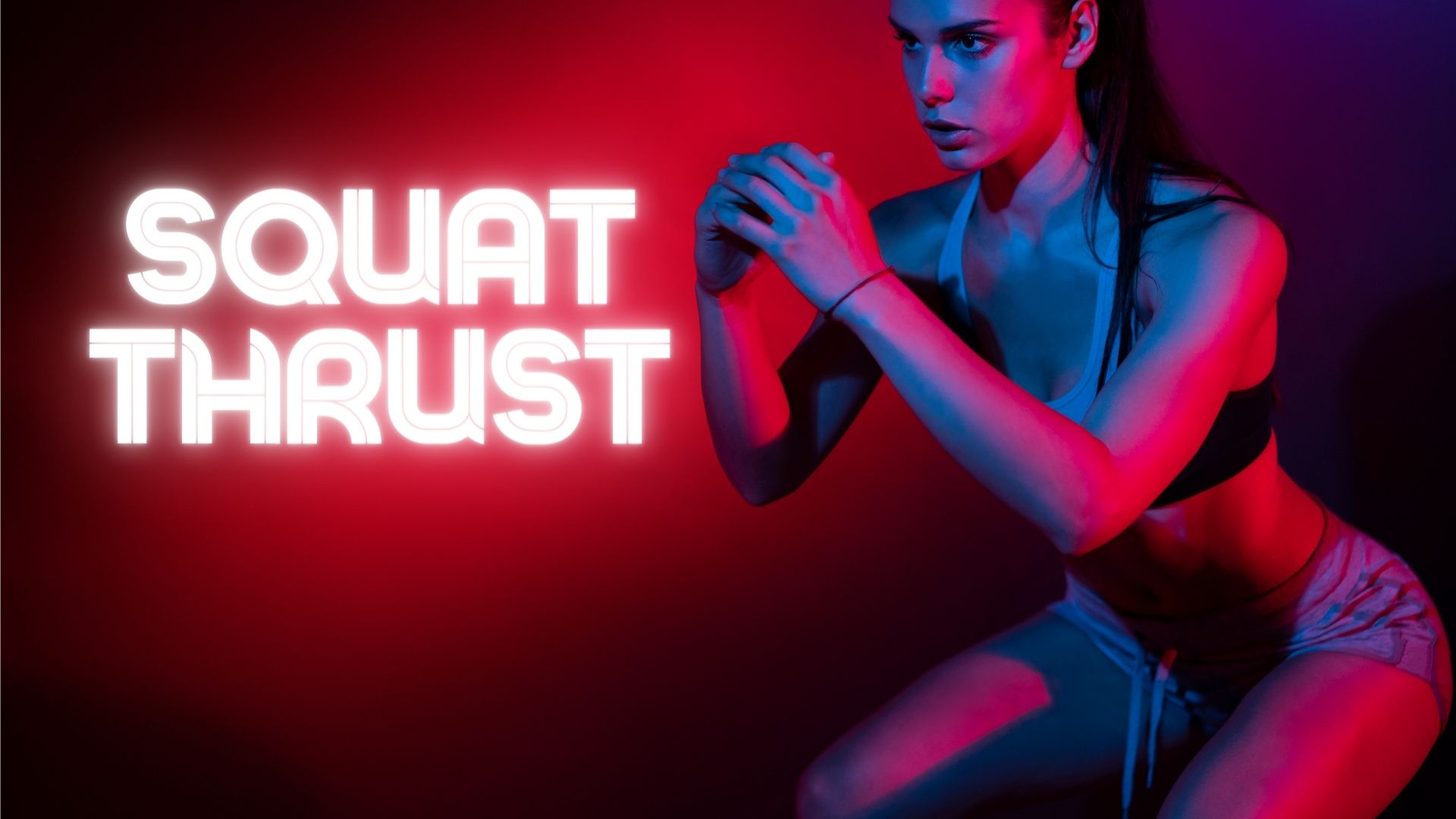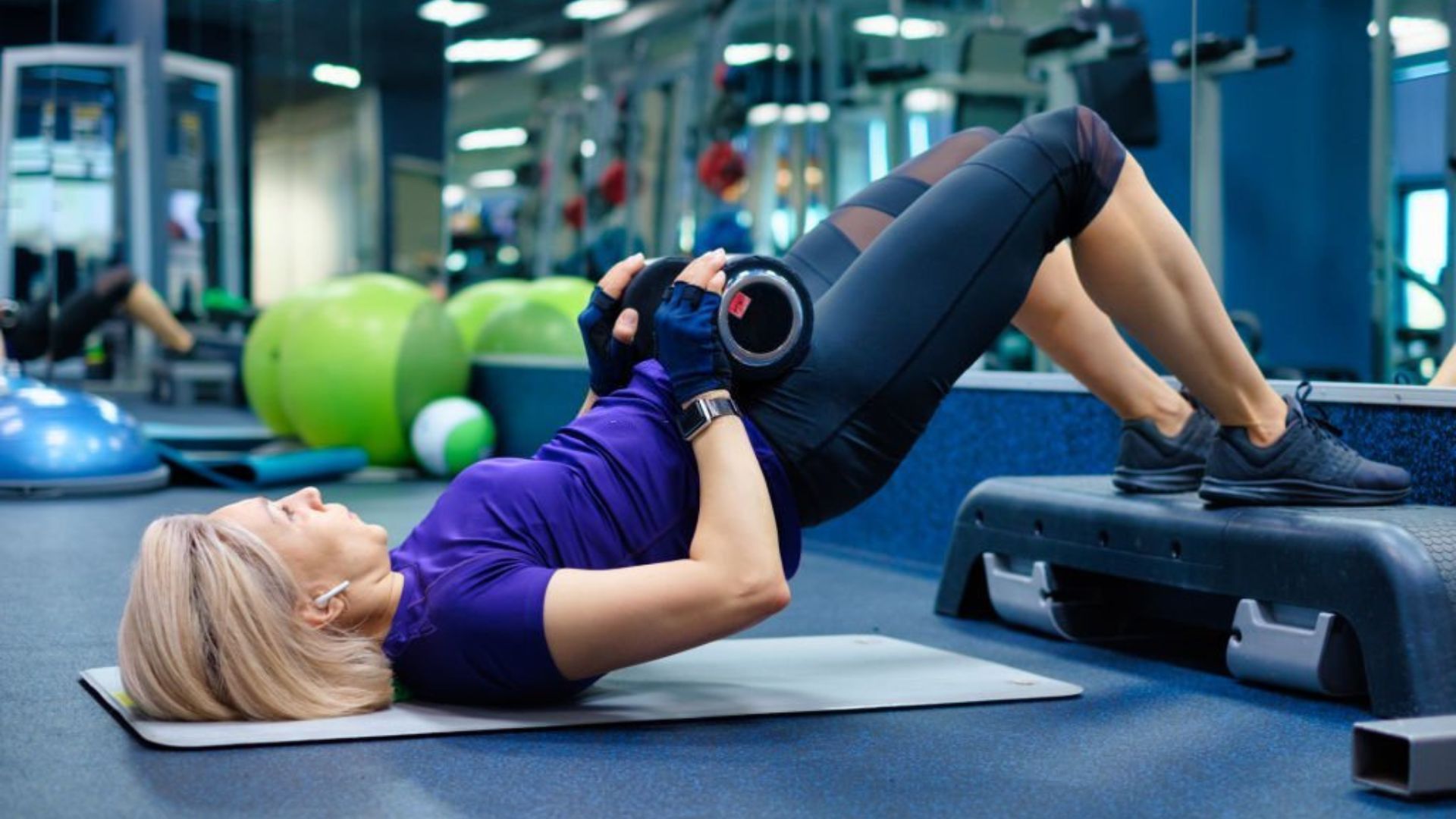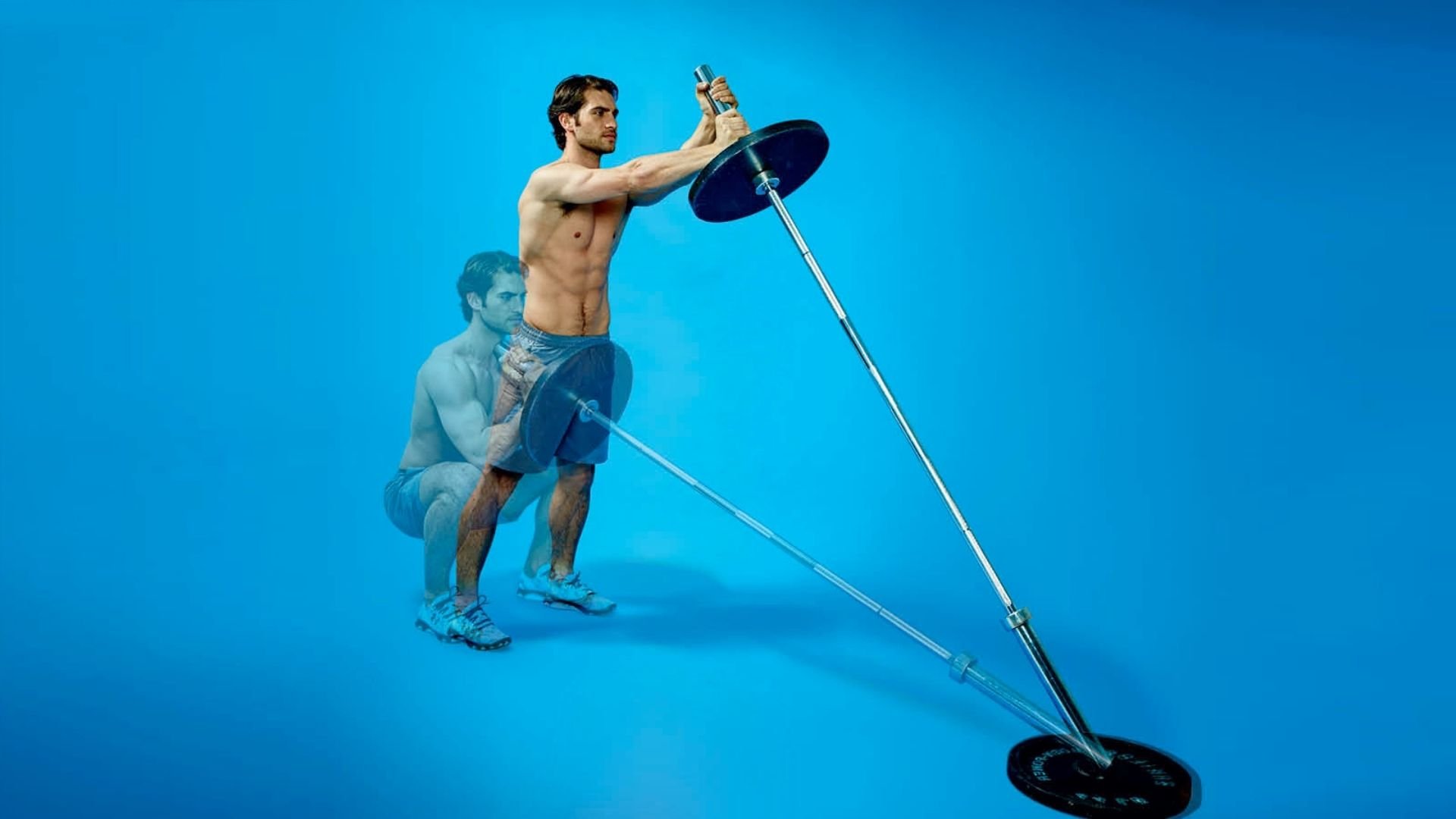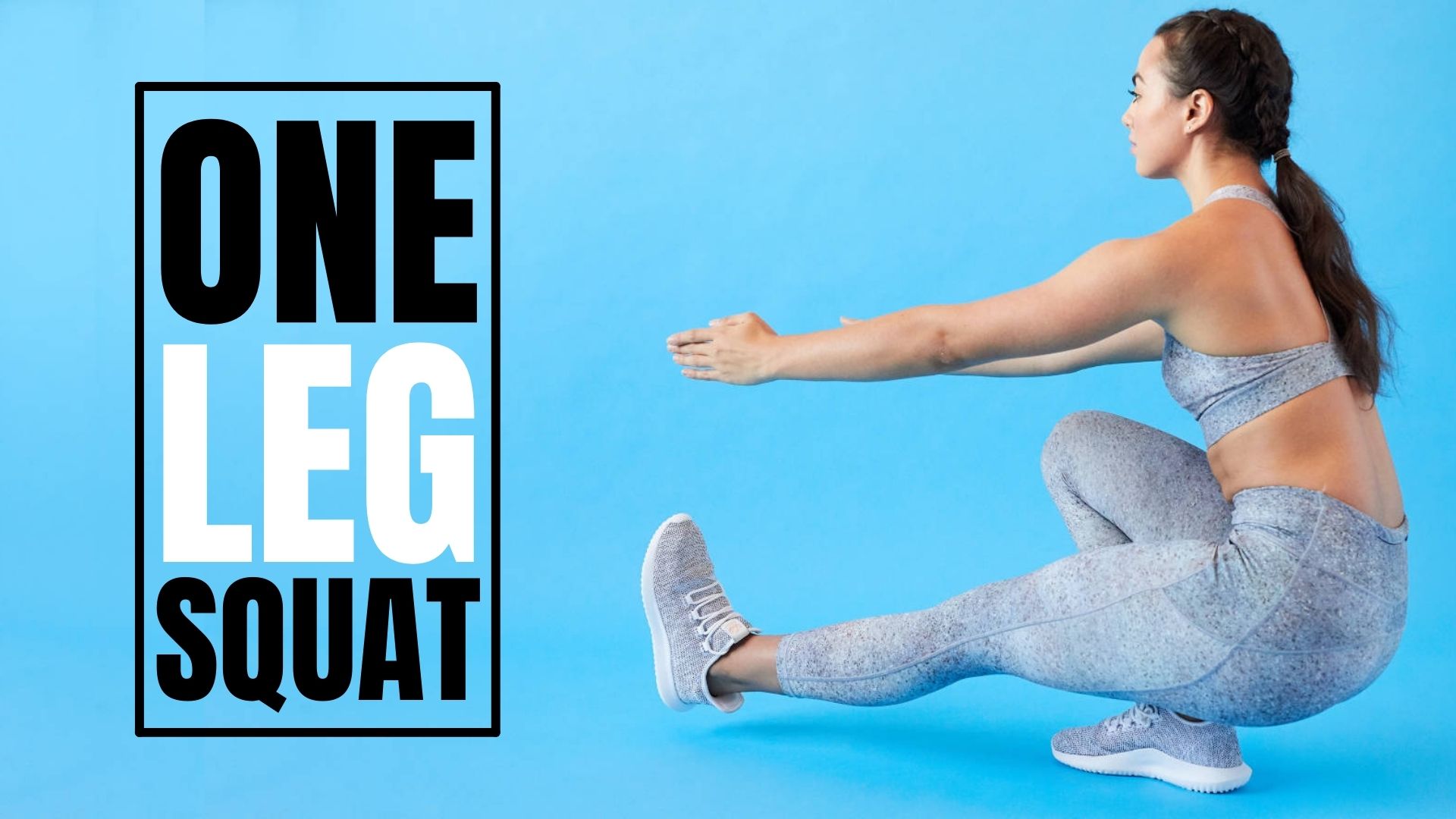
One Leg Squat: The Ultimate Leg Strengthening Exercise
One of the best ways to increase strength, balance, and coordination is to include One Leg Squats in your training program.
This exercise will improve stability and core power.
It can also prevent injury and increase performance.
To maintain your form, performing the exercise in front of a mirror is best.
You will eventually be able to get rid of the mirror.
How To Perform One Leg Squat
There’s no equipment required for a One Leg Squat. You can use one dumbbell with each hand or a medicine ball using both hands if you want to take on an extra exercise.
- Begin by standing with your left foot.
- Then, lift your left leg and hold it straight and slightly ahead of your torso. You can also move your knee forward while keeping your leg straight for the first time. Your arms could be on your side or towards the front to help you stability.
- Maintain your core in place and keep your torso up during the move.
- As you pull your hips back while you lower yourself into a squat.
- Try to lower your body so that your hips align with the ground.
- Engage your glutes while you press into your right foot and then step back up. Keep your left foot up between sets.
- Perform 5 to 10 repetitions on this side before changing to the other side.
- Do three sets.
Benefits Of One Leg Squat
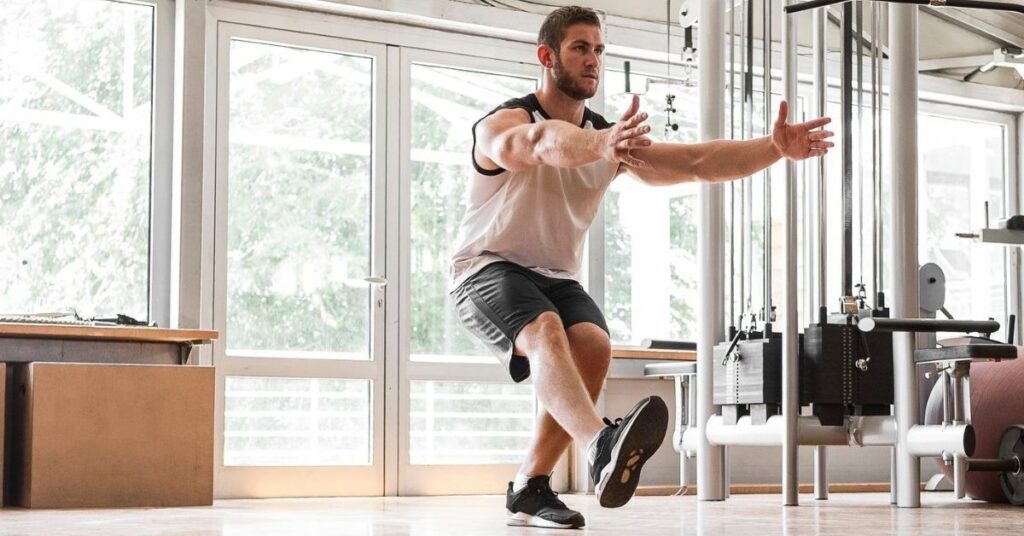
The One Leg Squat or any other squat is a great way to tone your legs and glutes.
It also strengthens the core muscles and increases flexibility.
It’s an excellent exercise for all athletes, regardless of their skill level.
However, it’s beneficial for runners.
One Leg Squats work the same muscles as running, the hips and quadriceps, gluteus maximus, and calves.
Although the One Leg Squat may seem like an easy exercise, it’s not difficult to perform.
You get multiple benefits and work the whole body with your body weight.
It doesn’t require equipment, so that it can be done anywhere.
Squats will strengthen your quadriceps and hamstrings.
Because it requires so much support and posture, it’s a great core workout.
Common Mistakes
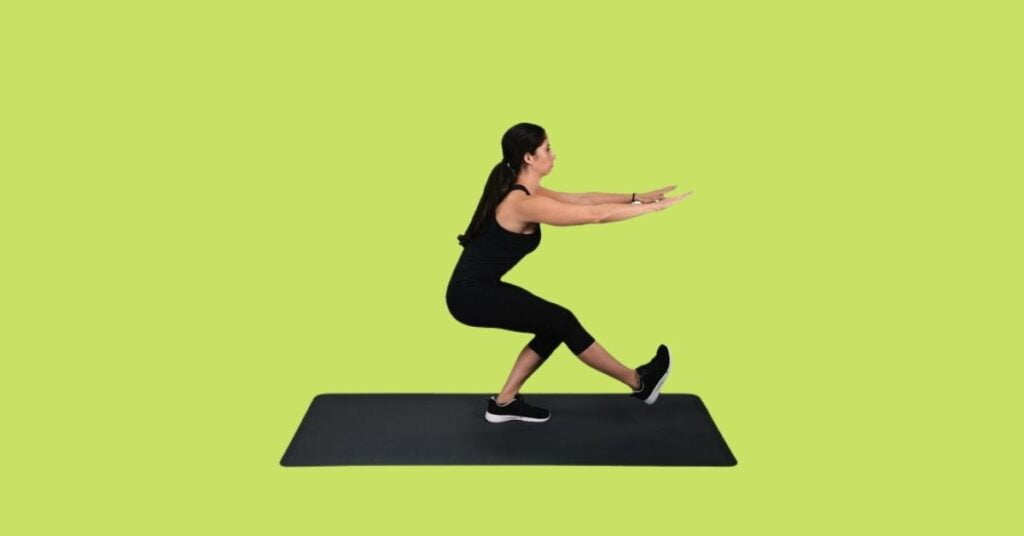
These mistakes can be avoided to get the most from this exercise.
Too Far Forward

Your knee should not extend past your toes.
Think of your hips moving back and your knees forward when you squat.
Your knee should align with your toes, not shift inwardly or outwardly.
Round Shoulders and Back

Your shoulders should be lowered and your chest open.
Throughout the squat, your back should be straight.
Your head and neck should remain neutral (aligned to your spine).
One Leg Squat Variations
Air Squat
It strengthens the quads, glutes, and core muscles.
You can do this by standing with your feet and your toes facing forward.
- Keep your head up and your chest high.
- Next, raise your shoulders and engage your core muscles.
- Think of your belly button being pulled in towards your spine.
- As if you were sitting in a chair, bending your knees, and hingeing forward at your hips.
- If necessary, extend your arms in front of yourself to provide a counterbalance.
- Keep your back straight, your torso straight, and your spine straight until your thighs reach the ground.
- Push your heels forward to stand for one repetition.
- You can complete three sets of 15 repetitions.
Single-Leg Isometric Holder
It strengthens glutes, quads, hamstrings, calves, and core muscles.
You can do this by standing with your feet shoulder-width apart, your toes pointed forward, and your toes pointed outward.
- Squat using both your legs until your knees bend to 120 degrees.
- Keep your knees bent at 120 degrees and raise one foot above the ground.
- For six to eight seconds, hold this position on one foot.
- Next, lower your free leg and then stand on both feet.
- You want to make a maximum effort using the single-leg hold but not fail.
- Your torso should be straight, and your knees should remain centered throughout the movement.
Your knee could become unstable or move inwardly, causing joint pain.
To strengthen your knee stabilizers, you can start with side steps and backward skating using a resistance band before moving to the pistol squat.
The more you get closer to a 90-degree angle for your knees, the more complex the squat will be.
The exercise is more straightforward if you start at an obtuse angle like 120 degrees.
With each training session, you can go lower until your knee bends to 90 degrees.
Then you can move on to the next level.
One Leg Squat to Box (Assisted Pile Squat)
Strengthen the muscle groups listed above in concentric (standing) and eccentric (lowering) movements while limiting joint angle to alter the difficulty.
- Stand against a box, chair, or bench at knee height.
- The higher, the better.
- Do a Leg Squat.
- Move slowly, keep control and tap the box lightly with your butt.
- Then slowly return to standing for one rep.
- Do all the reps on one side, then switch to another.
You can make the exercise more challenging by lowering the height of your box.
This method is simple: Use a low box or chair and stack books on top.
To increase your squat depth, remove a book from the stack as you gain strength.
You can complete five sets of five reps while keeping your knees at 90 degrees or less.
Then you can move on to the next exercise.
Rolling Pistol Squat
Rolling pistol squat uses the entire range of motion to assist in the more difficult concentric phases of the movement (standing) as you build up towards a full, unassisted pistol sit.
- Stand on one leg and lower into a squat.
- Keep going until your butt touches or almost touches your heel.
- Slowly and controlled, slowly roll onto your back.
- Carry your momentum forward and roll backward to get on your feet and do one more repetition.
- Perform all the reps on one leg and then switch to the opposite.
You can make this exercise more challenging by gradually increasing your speed when you bring yourself back into the pistol squat.
You’re ready to do the real thing when you can get back on one foot and stabilize for a few seconds.
Pistol Squat
Pistol squat strengthens the glutes, quads, hip adductors, and calves while balancing and stabilizing.
- Stand on one leg and extend the other in front.
- Keep your head up and your chest high.
- Next, raise your shoulders and engage your core.
- Bend your knee and hinge forward at your hips to lower into a squat.
- To counterbalance, keep your arms straight in front.
- Keep lowering your body, keeping your spine straight and your torso upright until you reach the bottom.
- Your butt should be at your heel.
- Engage your glutes and push your heel through to stand.
Safety and Precautions

If you have suffered an injury to your back, ankles, knees, or legs, consult your doctor or physical therapist to determine if this exercise suits you.
This exercise will make your core and muscles work, but you should stop if it causes pain.




